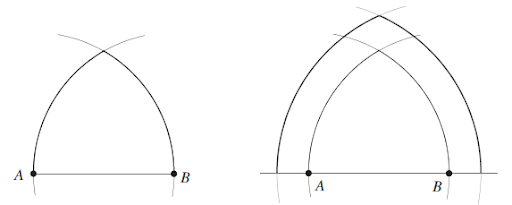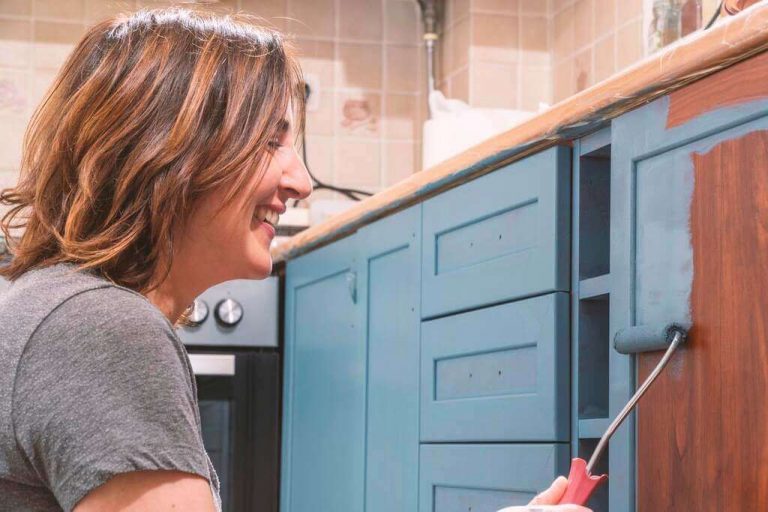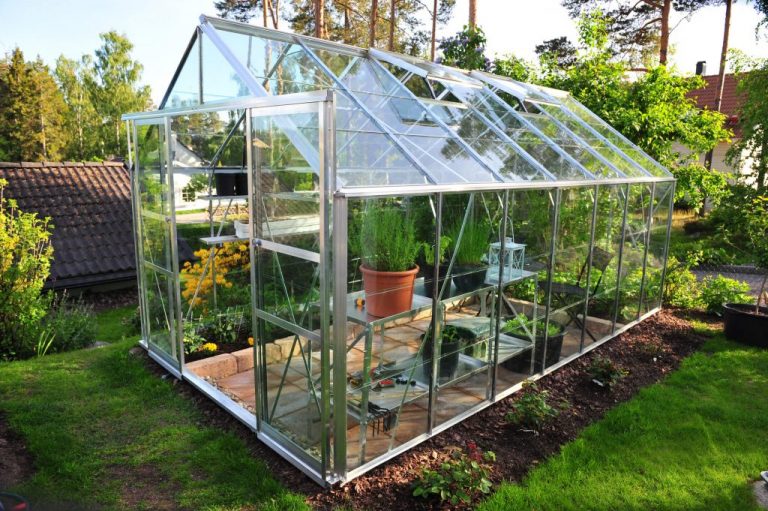Welcome to Architectureideas!
Here are we with the second episode of the #asktheexperts series.
For the readers who are new to our website and don’t know about this, in this series, we will be interviewing architects, interior designers, and professionals in this field. This way you can get to learn more about their work and them. And who knows, you might get inspiration from them for your next project!
Today, we’re pleased to tell you about the interview of a globally known personality in the world of architecture: Karim Rashid! He is an Egyptian-born Canadian industrial designer and interior architect who currently works from New York City. He got popularity for his unique industrial design of plastic consumer products.
Time magazine has described him as “Prince of Plastic” and “The Most Famous Industrial Designer in all the Americas.”
With over 4000 designs in production and 300 awards, Karim Rashid is one of the
prolific designers of his generation. Counted in one of the best-known personalities in the interior design industry, Karim Rashid is a pioneer in futuristic designs.
Anyone can easily recognize his work as Karim Rashid has a fresh and unique style. He is well known for using pop or pastel tones, bold combinations, and glossy lacquered finishes. His designs mostly include luxury goods, surface design, furniture, lighting, brand identity, and packaging.
He really likes working with plastic (that’s why known as the Prince of Plastic). He loves to color elements and create soft and sensual forms. All these elements distinguish him from the rest of the designers and architects.
Our expert team has asked some of the most common questions that everyone wants to know from an interior designer. We’ve asked both personal and professional questions from him that will help you get to know not only Karim Rashid but also his entire interior design career journey and projects that he has worked on in the past.
So are you excited to know about this famous personality? Let’s start with the interior designer interview!
Karim Rashid on Interior Designing FAQs (Frequently Asked Questions)
First was the most basic and ideal question to know more about his educational background, designs, projects, why he has chosen this field, etc. Let’s sneak into the interior designer’s life.
Can You Tell Us Something About Yourself and Your Journey?
I was born in 1960 in Cairo, and after a year, we moved for a short time to Rome. My father was working with Egyptian television as a designer and then with Cine Citta in Rome for a short time. Then we moved to Paris. My father had an exhibition, and then he decided to move on. My mother’s British, and she wanted to go to England to be near her family after five years abroad.
So, then we moved to London, and I was young, about two and a half. My first formative years were in London. I was very young, about six when we moved to Canada, which was very different from England despite their linguistic similarities. I remember my first experiences from then on. We have differences in how much we remember our childhoods.
I remember very little of mine. It’s strange. My first really strong memory was on the ship going from London to Montreal. We were at Queen Elizabeth, and there was a drawing competition which I won.
I was confused as a teenager about what profession I would go into. I had accelerated high school, so I was 16 when applying to university and was torn between architecture, fine art, and fashion. I originally applied to study architecture at Carleton in august, so I was too late, and the program was full. They told me they could accept me in the ‘architectural stream’ of Industrial Design.
So, I went to Carleton University expecting to study architecture, but fate had it, that the second I took some industrial design courses, I knew that it is what I wanted to do. I assumed that one had to be an architect to design a chair or coffee machine, or a product. I loved the Italian product design landscape, and all those products that I admired for years that were in our house were designed by architects. In fact, Italy did not have an industrial design school until 1984.
The Carleton program was only in its second year, so in turn, and not enough faculty or courses in industrial design, so the greatest experience I had was to study engineering, architecture, philosophy, languages, and have such a broad diversity of courses. I have concluded from teaching for so many years that a designer needs a broader experience, and in fact, I believe that design should really be only taught in graduate school.
After college, I went to a one-year graduate program in industrial design in Italy, studying with Gaetano Pesce and Ettore Sottsass. Sottsass taught me that there are many beautiful design objects, but that you have to ask what they do for us?
In the sense of human, inspiring objects, Memphis was a revelation and a turning point in the design. There are many imposing design objects who need to stand by themselves to impress. I always ask myself, what is left, if you take the design away? If it’s style, it is a thing of the past. I define design as embracing contemporary criteria to shape the future, not being derivative of the past.
Later on, I was a part-time professor in Toronto at OCAD in interior design and taught furniture design at the University of Toronto School of Architecture. Then I received a full-time assistant professorship at the Rhode Island School of Design (RISD).
I was going to quit the design profession and become academic since, at this point, I felt very uninspired. But in 1992, when I was fired from RISD because I was told I was teaching ‘philosophy and theory,’ not design, I decided to get back into the profession. I loved academia, but I’m grateful to have been let go because it prompted me to start my own firm in NY in 1993.
My career really started in 1993 (when I was 33) when I moved to New York City. I was penniless in NY but started drawing objects romanticizing the beautiful world I always wanted to shape.
I found a rundown loft without a kitchen or bathroom and struggled to survive. After approaching about 100 companies, from Lazy boy to Gillette, I only got one client. And I started teaching at Pratt Institute and worked alone for a few years before hiring some staff. I was determined to create a successful practice. That was 29 years ago!
Whom Do You Consider as Your Role Model, and Why?
When I was younger, I was obsessed with designers such as Raymond Lowey, Deiter Rams, Luigi Colani, Charles Eames, Achille Castiglioni, Ettore Sottsass, Alessandro Mendini, but also loved architects such as Le Corbusier, Bauhaus, Oscar Niemeyer, Russian Deconstructivism, and fashion designers such as Pierre Cardin and Andre Correges, painters such as Picasso, David Hockney, and Marcel Duchamp, filmmakers such as Fassbinder, Fellini, fashion illustrators like Antonio Lopez, photographers like Andre Bretton, and Helmut Newton, and so many others.
I knew that I had the talent, focus, and perseverance to become one day successful as they were. Then I ended up studying with Ettore Sottsass and Gaetano Pesce and working in Milano with Rodolfo Bonetto.
I also saw hundreds of lectures from Buckminster Fuller to George Nelson, Mario Bellini to Richard Sapper.
To know more about his projects, we asked him about his top work that he considered as most successful.
Can You Please Brief Us About One of Your Most Successful Projects?
I then designed the OH chair and Garbo Waste can for Umbra (1995). They continue to sell millions and proved to me that Americans want to design but at an affordable price.

Source: shopify.com
Materials: Polypropylene shell and powder-coated steel tubular legs
Dimensions: 24″ x 24″ x 34″ High, 17″ seat height, 24″ arm height
I then went on to design cosmetic packaging for Issey Miyake, the Prada skincare line, cosmetics for YSL and Shiseido, products for Sony in 1998, and Giorgio Armani shops in 1999.

Source: colorkinetics.com
The first restaurant I designed was for Morimoto the Iron Chef in 2001 (Philadelphia), which fortunately won many awards. Being a successful restaurant interior afforded me many more interior projects, including the Semiramis hotel in Athens.
My first condo for HAP investments in NYC has opened the doors for me to design so many residential interiors and buildings. I later designed two condos in Miami with Related Group.

Source: art-invest.de

Source: bstatic.com

Source: prizeotel.com
The prizeotel in Bremen, Germany I designed 10 years ago won 7 global awards.
I always believed that inspiring, interesting design should be democratic, and this budget hotel I designed reinforced my belief. Since then, I have expanded the brand by designing another 10 all over Europe with great success.
Also, the Nhow hotel Berlin was a wonderful exploration of my vision. I wanted the space to have a pulse, to sing and come alive around you, so that guests feel inspired and revitalized.

Source: blogspot.com

Source: nytimes.com
My most challenging project was probably my design for Naples Metro. It is my longest project to date! I started in 2004, and it wasn’t completed until 2011. But I am very proud of the finished product. They selected various famous architects to design each station.

Source: yatzer.com
Veuve Clicquot gave me great freedom because they are not manufacturers with strict guidelines on what they create. Artemide is a fantastic client because their product is so magnificent. Nambe was my first client and continues to develop fantastic objects. Also, the Bobble water bottle won 6 awards and is totally universal, meeting global consumer needs of blurring borders, staying hydrated, saving money, and helping the earth.
So the next question we asked is actually for our to-be interior designers. This will give you some motivation to remain focused and inspired.
What Does It Take to Make the Project Successful?
Being a successful designer means that I have contributed and accomplished something in this world that is appreciated by many, that has had an impact on the social landscape, and that I have marked history and left a fingerprint on the next generations of designers. The highlight now is to see over 1 million people on Facebook and 300k followers on Instagram like me because I always saw design as a populist act, not an elitist act.
The next question is something that we all wanted to know.
How Do You Stay Updated with All the Latest Trends?
“I don’t believe in trends.”
A top-class designer saying that he doesn’t believe in teh ongoing trends is pretty shocking. But what’s the reason behind his statement is more shocking!
Here’s what the designer said to us:
People like to assume that design moves with more superficial trends, but it is technology and humanity that drive us. So, I read journals about technology and materials, visit my client’s factories, see new technologies at the trade fairs at which I lecture, and listen to the expertise of my clients.
What Is Your Signature Style, and How Did You Make It?
We are all original with unique fingerprints and DNA.
So, if we are original, then we are all capable of contributing originality to this world!
Anything You Don’t Like About This Industry or Change?
I am perplexed by the digital age. The digital age affords us to be exposed to everything and to empower creativity and individuality, yet I am observing singular global trends. There is a lack of diversity and differences we historically had with different countries, nationalities, and cultures.
How Do You Tackle All Problems and Requests from Clients?
I feel like inspiration and innovation come out of limitations. If we had many resources, there would be no experimentation. Sometimes my most creative work has come out of a small budget for interiors or limitations with tooling.
I have also learned that many designers do a great deal of work, but we end up not seeing most of it, and it remains in concept form only because the key to putting work on the market is to make sure it is a collaboration. If you work closely with a client and understand their needs, you can be much more productive.
Design is collaboration, and when I listen to my clients, their needs, then the outcome will likely be produced. And for me, I am not interested in just concepts. I need it to manifest my ideas. You know, the solutions to our problems are in front of our eyes, you just have to see them.
Something About Your Dream Project?
This is what we all want to know from every interior designer, right! So, here’s what Karim Rashid said about his future dream project.
I would love to design for Tesla or any car company as long as I can design an electric car. I would also like to work with companies such as Adidas, Bose, Boeing, Bang & Olufsen, Ferrero, H&M, T-Fal, Numark, Conair, Bionaire, Kartell, Herman Miller, Braun, IKEA, Vitra, Fiat, Vespa, Levi’s, Uniqlo, or other fashion brands and too many others to list… I think they all make intelligent products, and my language and philosophy could really help shape their brand’s future.
And I would like to design a biodegradable bucket for Rubbermaid for my ‘BUCKET’ list ….haha.
What Are You Currently Up to Any Project or Company?
I’m working on designing and building my own dream home. Also working on a new installation for NYCxDesign, packaging for CBD products, a new fantastic furniture line for a Portuguese home brand, packaging for a new baiju bottle, a shared bike in Brazil, high-end walk-in closets, an art furniture collection, new rugs, more prizeotel’s, a private home, and a condo in DC, and a high-end resort in Russia.
What Do You Think About Our Website (Architecturesideas.com)?
Honestly, I think it is very informative from a technical side but needs to be a little more progressive and inspire and feature more interesting projects globally.
Karim Rashid: Awards & Nominations

Source: linesmag.com
With so many years of experience, Karim Rashid has won more than 300 awards and countless nominations. Below is the list of awards and nominations he won over the last five years.
Design & Build Awards (Designer of The Year, New York) Golden Trezzini Awards: Finalist Green Good Design Awards
German Design Award Good Design Awards Interior Design Best of Year Award: Firm Leader Interior Design Best of Year Award: Honoree
Dezeen Awards: Longlist Dieline Awards German Design Award
German Design Award Good Design Awards |
Also Read: Meet Assel Baimakhan Of Casa Azzurra – A Famous Interior Designer
A Look-book of Karim Rashid’s Top Projects

Source: cloudfront.net
Karim has worked on many different projects, including both residential and commercial. He has worked in more than 40 Countries and completed various projects, including 111 interiors, 329 furniture designs, 47 buildings, and 37 architectural finishes. And this list keeps growing!
Here are some of the top 5 projects by Karim Rashid:
1. Lotte Amoje – The Food Capital (Seoul, South Korea)

Source: adsttc.com

Source: adsttc.com
2. Prizeotel Antwerp-City (2020)

Source: sharepoint.com

Source: sharepoint.com

Source: sharepoint.com
3. Kollage Building (2021)

Source: stirpad.com

Source: sharepoint.com
4. Punto Design (2022)

Source: sharepoint.com
5. Hill8 Apartments (2019)

Source: karimrashid-my.sharepoint.com

Source: sharepoint.com

Source: sharepoint.com
Here are some more images of his other projects;

Source: sharepoint.com

Source: sharepoint.com

Source: linesmag.com

Source: sharepoint.com

Source: sharepoint.com

Source: cloudfront.net

Source: sharepoint.com

Source: sharepoint.com

Source: sharepoint.com

Source: sharepoint.com
A Handful of Information on Interior Designer’s Life
Karim has made a mark in the architectural and industrial industry through his spectacular designs. You can see his work in numerous fields like architecture, interior, fashion, products, and even music.
He also won many awards for his top-notch designs such as luxury goods for Christofle and Veuve Clicquot and democratic products with 3M, furniture with Bonaldo, and Vondom. You’ll be surprised to know that he even designed some of the high-tech products for Asus and Samsung.
Karim Rashid describes himself as a “design pervert, cultural shaper, poet of plastic, digipop rockstar.”
Another most fascinating thing is that Rashid’s designs have been featured in 20 permanent collections in various art institutions around the world such as Brooklyn Museum of Art, the MoMA, the Chicago Athenaeum, and the Centre Pompidou in Paris.
Before this interview, we all knew Rashid for his remarkable work, but after this interview, we got to know him at a very personal level and everything about his entire career journey and the inspiration behind his work.
No Doubt Karim Rashid is a huge inspiration even for those who didn’t agree with his philosophy. After all, it takes a lot to break through the old traditional design habits and create something new. That’s why Rashid developed a strong identity for himself. People like him take steps to make a path and create a new future!
It’s an honor to interview Karim Rashid and get to know him professionally and personally. So whether you’re a rising interior designer or have already done many projects, Karim Rashid is surely an inspiration. His works in so many different zones will inspire you to create something creative and help you grow in your career.










